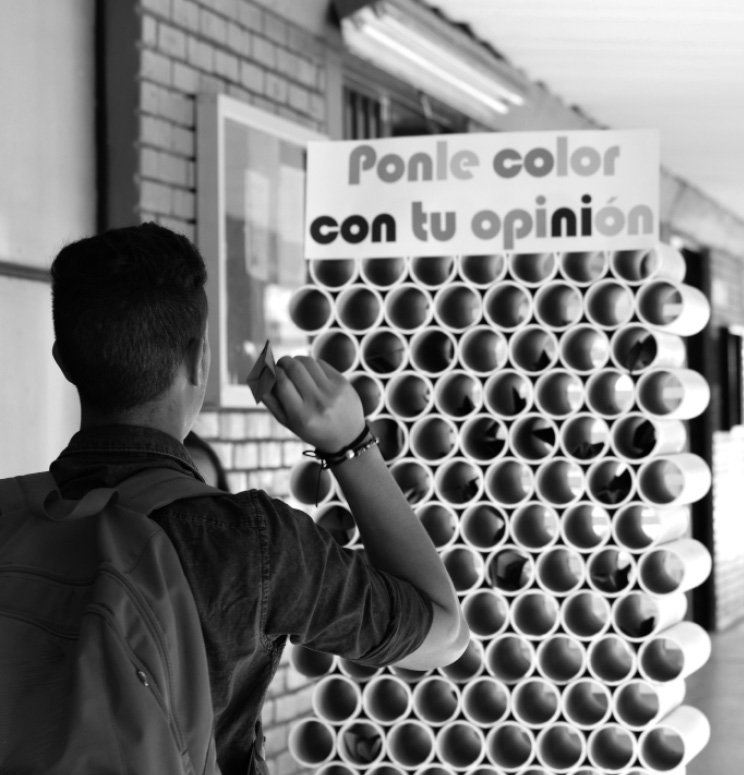Exploring Interactive Experiences for the Diagnosis of Behavior in Social Places
DOI:
https://doi.org/10.33304/revinv.v17n2-2022002Keywords:
Behavioral, Diagnosis, Design, Experience, InteractiveAbstract
This article presents the findings of design research that aimed to identify the contribution of interactive experiences to diagnosing behavior in social places within the framework of university culture. The study had a critical social approach, of applied purpose and exploratory type, which contemplated three research moments: determination of the elements from the behavioral theory that structure the diagnosis, exploration of the design of interactive experiences and analysis of the relevance of the design of interactive experiences as a diagnostic tool for the construction of university culture. The data obtained were of a mixed nature, so the analysis of the information was carried out employing complementary techniques. Finally, the results of the diagnosis of 16 behaviors that comprised the case study of the campus of the Universidad Pedagógica y Tecnológica de Colombia, Facultad Seccional Sogamoso, Boyacá, Colombia, are presented.Downloads
References
Bicchieri, C. (2019). Nadar en contra de la corriente: Cómo unos pocos pueden cambiar los comportamientos de toda una sociedad. Editorial Paidós.
Carreras, A. y Parés, N. (2007). Diseño de una instalación interactiva destinada a enseñar conceptos abstractos. Actas del Congreso (Proceedings) Interacción, (1), 1-33.
Cash, P., Khadilkar, P., Jensen, J., Dusterdich, C. y Mugge, R. (2020). Designing behaviour change: A behavioural problem/solution (BPS) matrix. International Journal of Design, 14(2), 65-83.
Fallman, D. (2008). The interaction design research triangle of design practice, design studies, and design exploration. Design issues, 24(3), 4-18.
Kim, S., Christiaans, H., y Kim, C. (2021). Understanding Everyday Design Behaviour: An Exploratory Experiment. International Journal of Design, 15(1).
Lockton, D., Harrison, D. y Stanton, N. A. (2010). The Design with Intent Method: A design tool for influencing user behaviour. Applied ergonomics, 41(3), 382-392.
Mockus, A. (2001). Cultura ciudadana, programa contra la violencia en Santa Fe de Bogotá, Colombia, 1995-1997. Banco Interamericano de Desarrollo.
Niedderer, K. (2013). Mindful design as a driver for social behaviour change. En Proceedings of the IASDR Conference 2013.
Norman, D. (1990). La psicología de los objetos cotidianos. NEREA.
Páramo, P. (2011). Sociolugares. Universidad Piloto de Colombia.
Pericot, J. (2007). Jugadas inéditas del juego de la imagen. Reflexiones en torno a los juegos de lenguaje de Ludwig Wittgenstein. En A. Calvera (Ed.), De lo bello de las cosas. Gili.
Press, M. y Cooper, R. (2009). El diseño como experiencia. Gili.
Simon, H. A. (1973). Artificial intelligence. MIT Press.
Universidad de Córdoba. (2008). Jornadas para los docentes. Universidad de Córdoba.
Velásquez, J. P. y Mejía, G. M. (2017). Articulación de las estrategias de cultura ciudadana con principios y métodos del diseño para el cambio de comportamiento. IV Foro Académico de Diseño. Manizales, Colombia.
Zamorano, F. (2013). Diseño de experiencias interactivas, lo lúdico y la espontaneidad. Revista Diseña, (5). http://www.revistadisena.com/diseno-de-experiencias-interactivas-lo-ludico-y-la-espontaneidad/
Zimmerman, J., Forlizzi, J. y Evenson, S. (2007). Research through design as a method for interaction design research in HCI. En Proceedings of the SIGCHI Conference on Human Factors in Computing Systems, (2), 493-502












